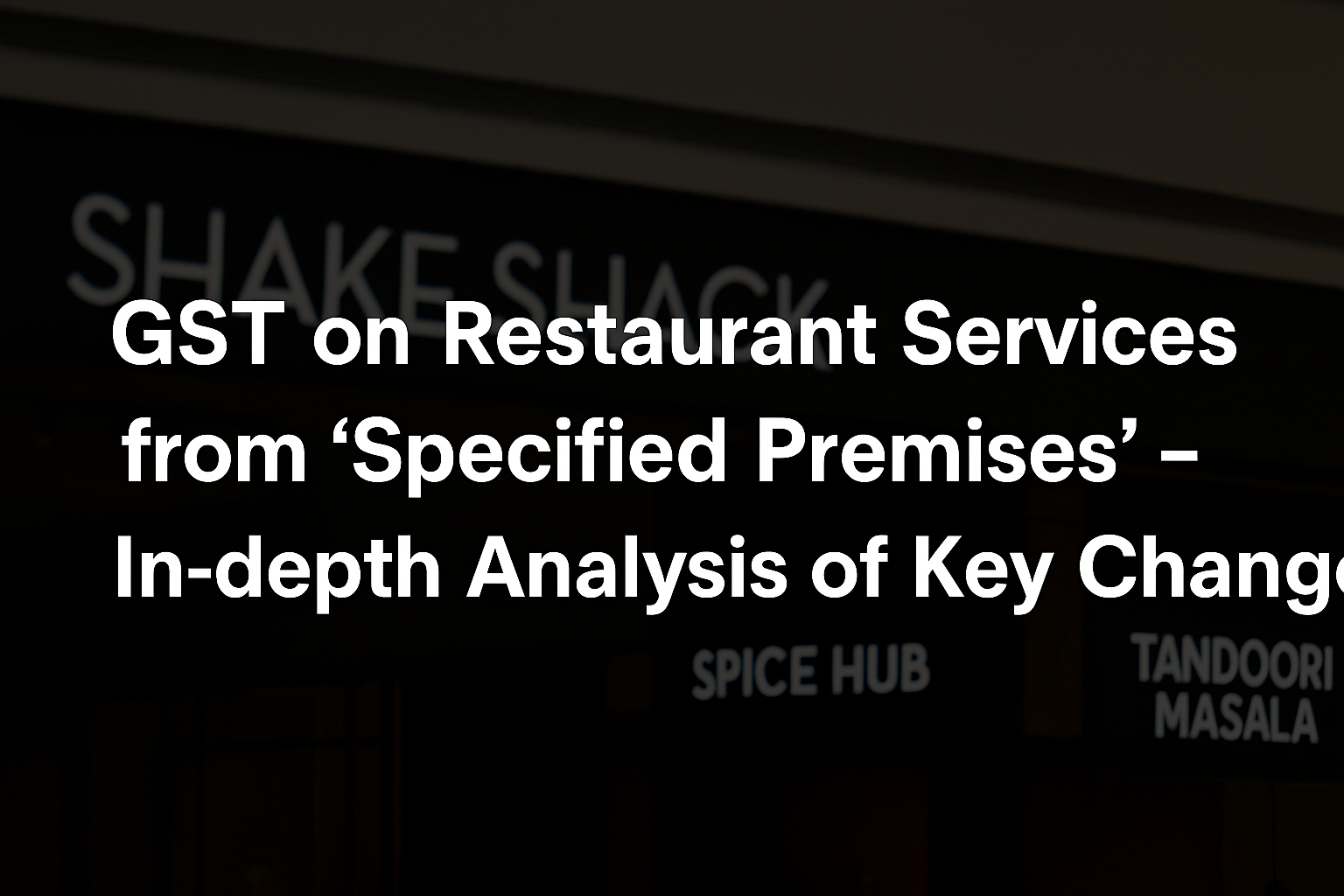
The Central Board of Indirect Taxes and Customs (CBIC) has notified significant changes in the GST treatment of restaurant services offered from "specified premises" — typically hotels, inns, clubs, or resorts providing accommodation services. These changes are effective from 1st April 2025, introduced through Notification No. 3/2024-Central Tax (Rate) and clarified through CBIC FAQs dated 28th March 2025.
In this article, we dissect the background of these amendments, the precise nature of changes, their applicability, and evaluate whether opting for “specified premises” status is beneficial from a business standpoint.
I-Background
When GST was rolled out in 2017, restaurant services were taxed based on the nature and location of operations. The broad classification was:
1. Standalone Restaurants:
These included food outlets not attached to any accommodation facility. These were taxed at:
2. Restaurants in Specified Premises (Hotels, Resorts, Clubs, etc.):
If a restaurant was housed within a hotel or similar establishment offering lodging, and if the hotel met the criteria of “specified premises,” the GST rate applicable was:
The rationale was that high-end hotels were better placed to manage credit chains, and the ITC mechanism ensured tax neutrality.
II-The Concept of "Specified Premises" under GST (Pre-2025)
Until 31st March 2025, whether a hotel was classified as a specified premises depended on its declared tariff:
Problems with the “Declared Tariff” Approach
Over the years, several challenges emerged with the reliance on declared tariff:
A. Inconsistent Tariffs Across Booking Channels:
B. Ambiguity in Interpretation:
C. Frequent Tariff Fluctuations:
These issues undermined tax certainty and created operational difficulties for businesses.
III-The Shift – From Declared Tariff to Actual Charges (Effective 01.04.2025)
To address the above complications, the government introduced a crucial shift in policy effective from 1st April 2025.
Key Change:
The classification of a hotel as a 'specified premises' will now be based on the actual charges collected during the preceding financial year, not the declared tariff.
New Rule:
IV-What Happens If You Qualify as a “Specified Premises”?
If a hotel qualifies as a specified premises, the following implications apply:
|
Restaurant Location |
GST Rate |
ITC Eligibility |
|
Within Specified Premises |
18% |
ITC allowed |
|
Non-Specified Premises |
5% |
No ITC allowed |
This rate is irrespective of whether the restaurant and the hotel are run by the same entity or different entities.
V-Declaration Requirements – Opt-In / Opt-Out Mechanism
The CBIC has laid out a clear declaration-based mechanism to ensure classification is based on taxpayer actions and data:
A. Who Must File the Declaration?
B. For Voluntary Opt-In:
If a hotel did not meet the Rs7,500 condition in the preceding FY but wants to voluntarily opt-in and charge 18% GST with ITC for its restaurant operations, it must:
Once opted in, this classification remains valid until the taxpayer opts out.
C. Opt-Out Provision:
VI-Special Cases and Compliance Considerations
1. Multiple Premises with Same GSTIN:
2. Third-party Restaurant Operators within Hotels:
VII-Should Businesses Opt for “Specified Premises” Status?
The decision to opt into “specified premises” classification has significant financial and strategic implications:
Pros:
Cons:
Businesses should analyze their clientele, pricing trends, and ITC eligibility before opting in or out. A data-backed approach, using past financials, can help make the right decision. With proper planning, hotels and restaurants can align their GST practices to optimize tax positions while maintaining regulatory compliance.
CA. Shreeharsha
GST Litigation Expert
Shreeharsha@sreshtaglobal.com
SUBSCRIBE GST E-LIBRARY (INDIA'S HIGHEST GST CASE LAW DATA)
FOR MORE UPDATE ON GST/ IT JOIN OUR FREE WHATSAPP GROUP BY CLICKING ON THIS LINK https://chat.whatsapp.com/C8VB6F6VHme3A061UDQKhj
Comment: